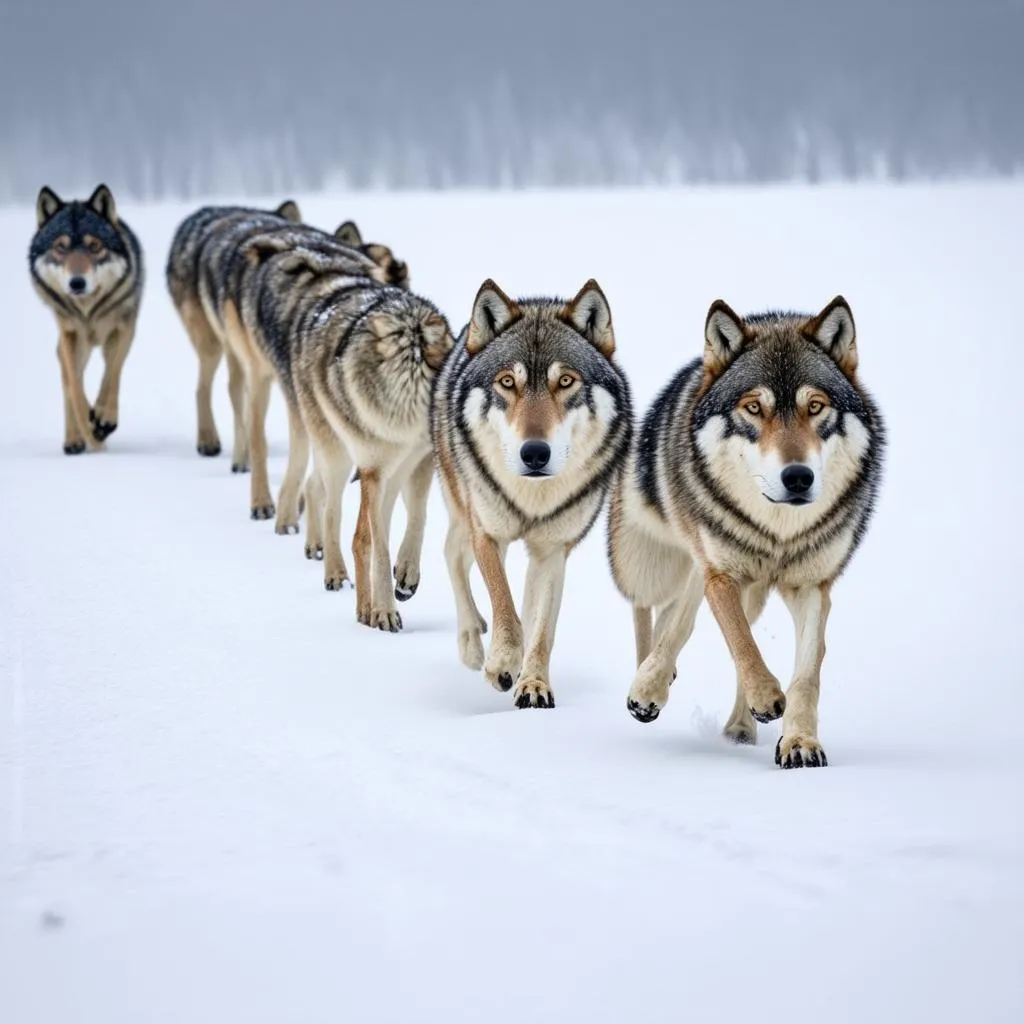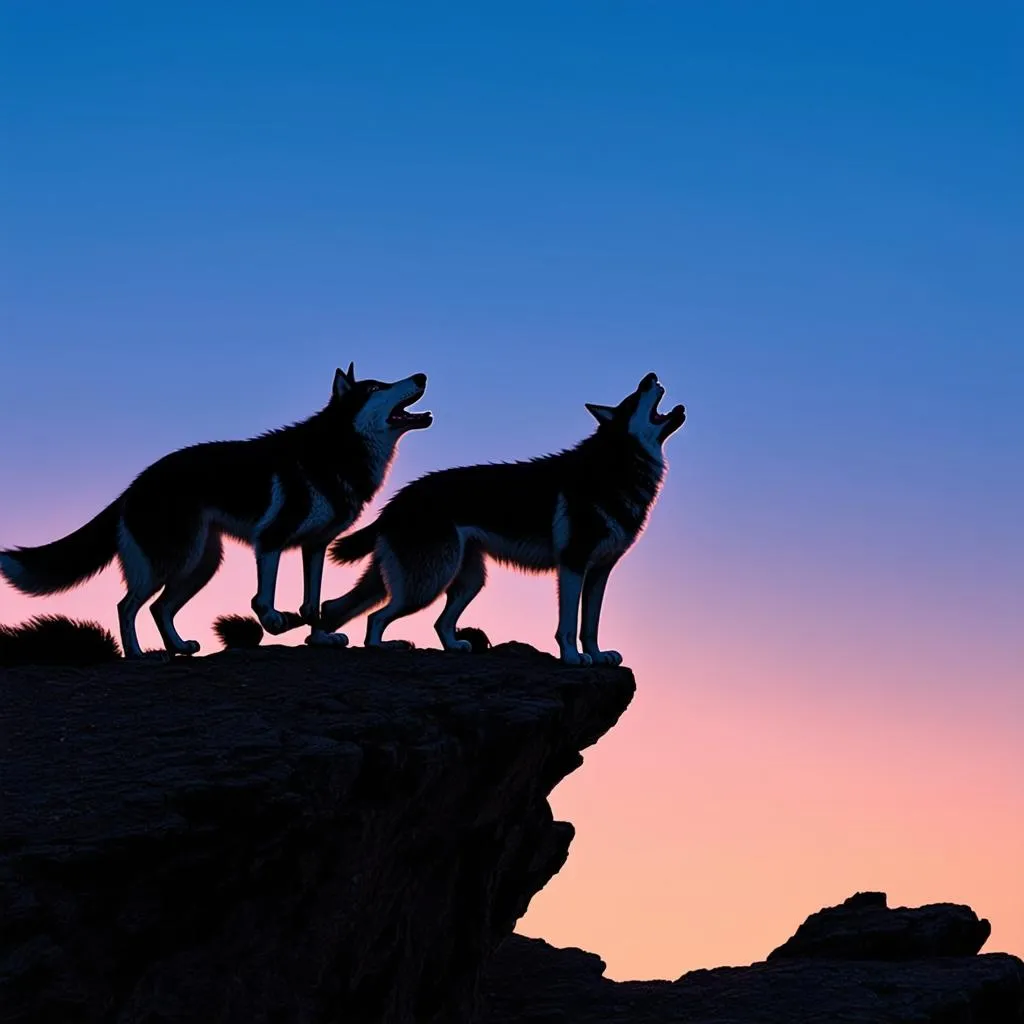Have you ever wondered how a pack of wolves, those majestic creatures of the wild, navigate the vast wilderness? Their journeys, often spanning hundreds of miles, are a testament to their incredible teamwork and navigational skills. Imagine trekking through the dense forests of Yellowstone National Park, following the faintest scent trails, just like a wolf pack on the move! Let’s delve into the fascinating world of wolf pack travel and uncover the secrets behind their incredible journeys.
The Hierarchy of Movement: Who Leads the Way?
Contrary to popular belief, it’s not always the alpha male leading the charge. While the alpha pair does hold the highest rank, the responsibility of choosing the travel route often falls on the shoulders of an experienced pack member, sometimes even a beta wolf. This seasoned navigator, often referred to as the “lead wolf,” relies on an array of senses to guide the pack.
Following the Nose: Scent Marking and Terrain
Wolves possess an extraordinary sense of smell, hundreds of times more acute than ours. They leave scent marks, like olfactory breadcrumbs, along their route. These scent posts, coupled with their innate understanding of the terrain, help the pack navigate efficiently, even through unfamiliar territory. Think of it as their own personalized GPS, guiding them through the wilderness.
Single File Formation: Minimizing Energy and Maximizing Efficiency
Picture this: a pack of wolves gracefully moving through deep snow, each stepping precisely in the footsteps of the one before. This single-file formation, a hallmark of wolf pack travel, serves a crucial purpose: minimizing energy expenditure. By following the leader’s trail, the pack conserves energy, a crucial factor, especially during harsh winters or long migrations. It’s a remarkable example of nature’s efficiency at its best.
 Wolf Pack Traveling in Single File
Wolf Pack Traveling in Single File
The Pace: A Steady Rhythm of Travel
Wolf packs often maintain a steady travel pace, averaging around 5 miles per hour. However, this can vary greatly depending on factors like terrain, weather, and the purpose of travel. During migrations, they can cover impressive distances, sometimes exceeding 30 miles in a single day. It’s like a marathon across the wilderness, driven by instinct and the pursuit of survival.
Navigating Obstacles: Rivers, Roads, and Human Presence
Wolves are highly adaptable creatures. They’re known to swim across rivers, carefully choose their crossing points to avoid strong currents, and even navigate roads and human-dominated landscapes, showcasing their incredible resilience and adaptability in the face of changing environments.
Communication is Key: Howls, Body Language, and Scent
Imagine hearing the haunting howl of a wolf echoing through the mountains, a sound that sends shivers down your spine yet signifies a deep connection within the pack. Howls serve as long-distance communication, helping wolves stay connected even when separated by miles. Within the pack, intricate body language and scent signals further strengthen their communication, ensuring a cohesive unit.
 Wolves Howling at Twilight
Wolves Howling at Twilight
FAQ: Unveiling More Secrets of Wolf Pack Travel
Do all wolves in the pack participate in travel?
While most pack members participate in travel, pregnant females or those caring for pups might stay back in the den. The pack ensures their safety and provides food upon their return.
What factors influence the direction of travel?
The availability of prey, seasonal changes, mating season, and even the avoidance of danger can influence the direction of a wolf pack’s travel.
Do wolves ever travel alone?
While wolves are highly social animals, young wolves, known as dispersers, often leave their natal pack to establish their own territory. This solitary journey is fraught with challenges but is crucial for maintaining genetic diversity.
Travelcar.edu.vn: Your Guide to Exploring the Wild Side of Travel
For more fascinating insights into the animal kingdom and travel inspiration, visit Travelcar.edu.vn. Discover the thrill of exploring the world, from the bustling streets of Hanoi to the serene landscapes of Phong Nha-Ke Bang National Park. Let us be your guide as you embark on your own adventure, whether it’s trekking through ancient ruins or immersing yourself in vibrant cultures.
Remember, every journey tells a story. What will your travel story be?